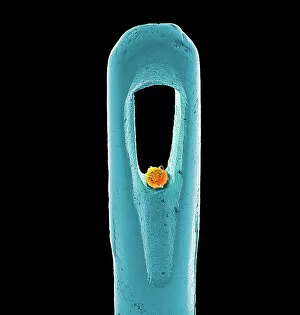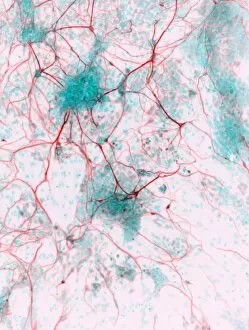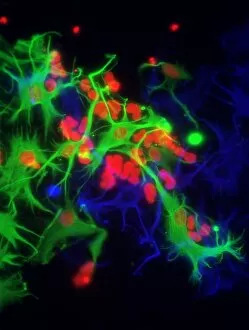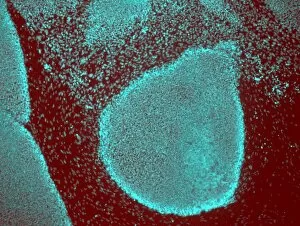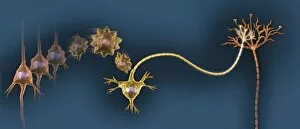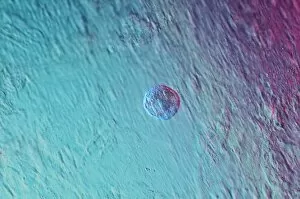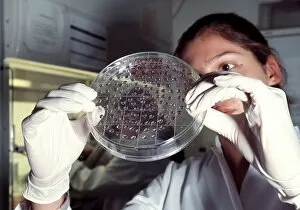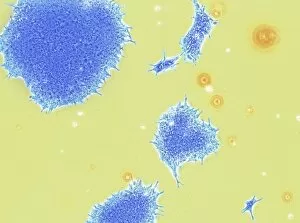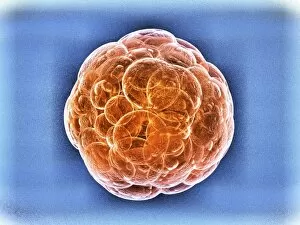Precursor Cell Collection
"Unlocking the Potential of Precursor Cells: Exploring the World of Stem Cell Differentiation" Embryonic stem cells, often referred to as precursor cells
For sale as Licensed Images
Choose your image, Select your licence and Download the media
"Unlocking the Potential of Precursor Cells: Exploring the World of Stem Cell Differentiation" Embryonic stem cells, often referred to as precursor cells, hold immense promise in the field of regenerative medicine. Like a delicate needle threading through fabric, these remarkable cells possess the ability to transform into various specialized cell types within our bodies. Under the watchful eye of scanning electron microscopy (SEM), we witness their extraordinary journey. Stem cell-derived nerve cells emerge like intricate branches, extending their reach towards new horizons. These neural pioneers pave the way for groundbreaking advancements in treating neurological disorders and spinal cord injuries. In another captivating scene, stem cell-derived retinal cells take center stage. With each microscopic detail captured by SEM, they offer hope to those affected by vision impairment or blindness. Through their regeneration potential, these retinal warriors aim to restore sight and brighten countless lives. The symphony continues as stem cell-derived neurons dance across a micrograph canvas. Their synchronized movements represent an intricate network that holds secrets to understanding brain function and unraveling mysteries surrounding neurodegenerative diseases such as Alzheimer's and Parkinson's. Amidst this cellular ballet lies another crucial player - stem cell-derived astrocyte brain cells. These supportive glial companions ensure proper neuronal communication and maintain brain health. By harnessing their power, scientists strive to develop novel therapies for conditions like multiple sclerosis or stroke recovery. With every breakthrough discovery comes renewed excitement; more stem cell-derived nerve cells join our cast on this scientific stage. Together with astrocytes, they form an army against devastating neurological conditions that have plagued humanity for far too long. As research progresses tirelessly in labs worldwide, we inch closer towards unlocking the full potential of precursor cells – bridging gaps between injury and healing with precision never before imagined. The story unfolds further still; it is a tale woven intricately by embryonic stem cells' transformative abilities - a testament to human ingenuity and the boundless potential of science.

